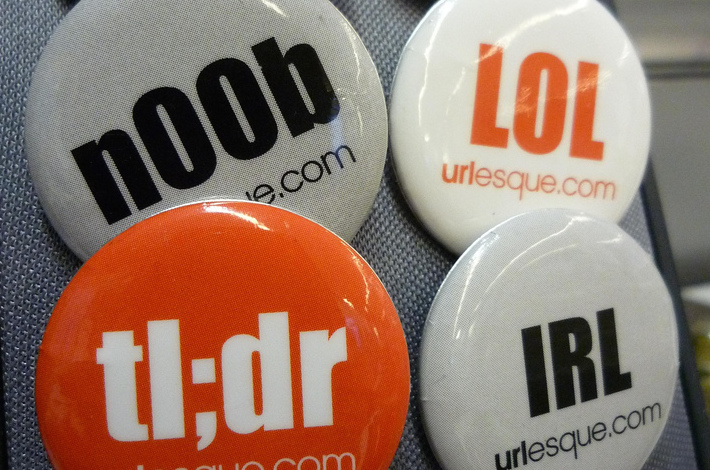
photo credit: Urlesque Buttons via photopin (license)
I recently met with an interesting startup from Israel called TL;DR that has changed the way I’m thinking about and using email.
TL;DR stands for Too Long; Didn’t Read. It started as a quip used on Web forums and now occasionally stands in as a shorthand for “Here’s the summary of the long-winded thing I just wrote.”
The TL;DR app only works on iPhone 5 and 6 models, and I don’t have one of those, so I’m not actually using the app. But its approach resonated with me: It encourages you to write very short emails by explicitly giving you a “TL;DR” box to summarize your messages in 30 words or less. In some cases that turns out to be all you need.
It also presents incoming emails in a Facebook-like “card” view so you can easily scan them and dispose of them or reply to them. Neat.
But the philosophy, not the app, is my takeaway:
1. Most emails are too long. That’s fixable: I’m now skipping most of the greetings, the signoffs, and the excess verbiage I used to use. I’m writing emails more like Tweets now.
Sure, I sometimes write longer, when I need to convey a lot of information or I’m being extra-polite when introducing myself to a new person. But my default email is now very short.
2. If you treat email as an endless stream of social data, its less burdensome. Somehow email has come to seem like “a pile of things I have to deal with” rather than “a series of messages I might be interested in.” But you can look at your inbox more like Twitter, and it changes your relationship to it. Older than a week? Forget it; I’m not feeling obligated to look at it. Next year, my cutoff might be a day or two.
Finally, a tip: I found an easy way to scan through Gmail in a way that speeds up reading a lot. It is not as elegant as the TL;DR app demo I saw, but it is almost as fast.
You need to enable Gmail shortcut keys for this. Here’s my current workflow:
Open up the first message in your inbox. Look at it, and if there’s no action to take, press the [ key (the left square bracket), which archives the current message and then displays the next one. This works better than Y, which archives the current message but then returns you to the inbox.
In this way, I can plow through a lot of messages just by going [ [ [ [.
If there is an action to take on a message, you can reply to the message quickly (press R), add a star (press S), or defer taking action by moving to the next message while leaving the current one in the inbox (press J).
Also useful: Press M to mute a message thread, so you won’t see it in your inbox again unless someone directs it explicitly at you. This is really useful for those long, useless intra-office pile-on threads.
Using this workflow I’ve been able to read most of my incoming “Priority” messages every day, while leaving a minimal number of other messages in my inbox for later followup or monitoring.
And as for the rest? I don’t worry about missing them any more than I worry about seeing every single Facebook update.
Here’s an Oatmeal comic about the problem with email. It’s kind of long, so TL;DR: Your emails are too long. Write shorter.



